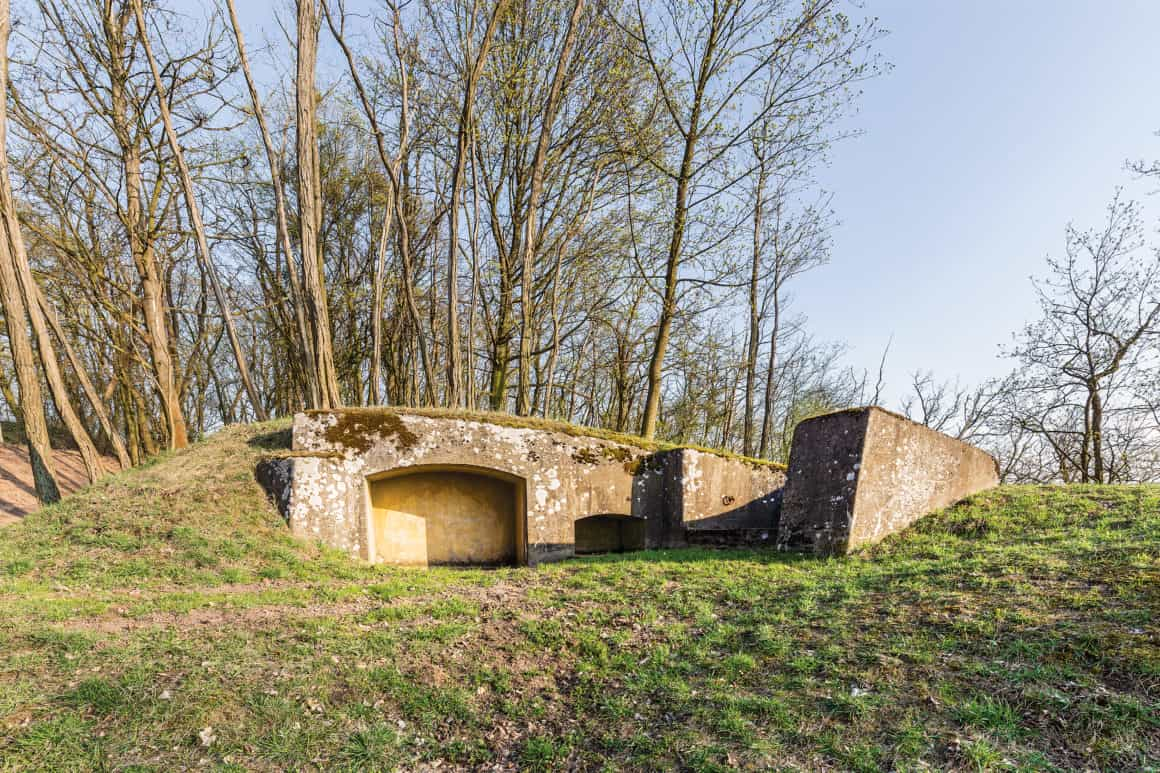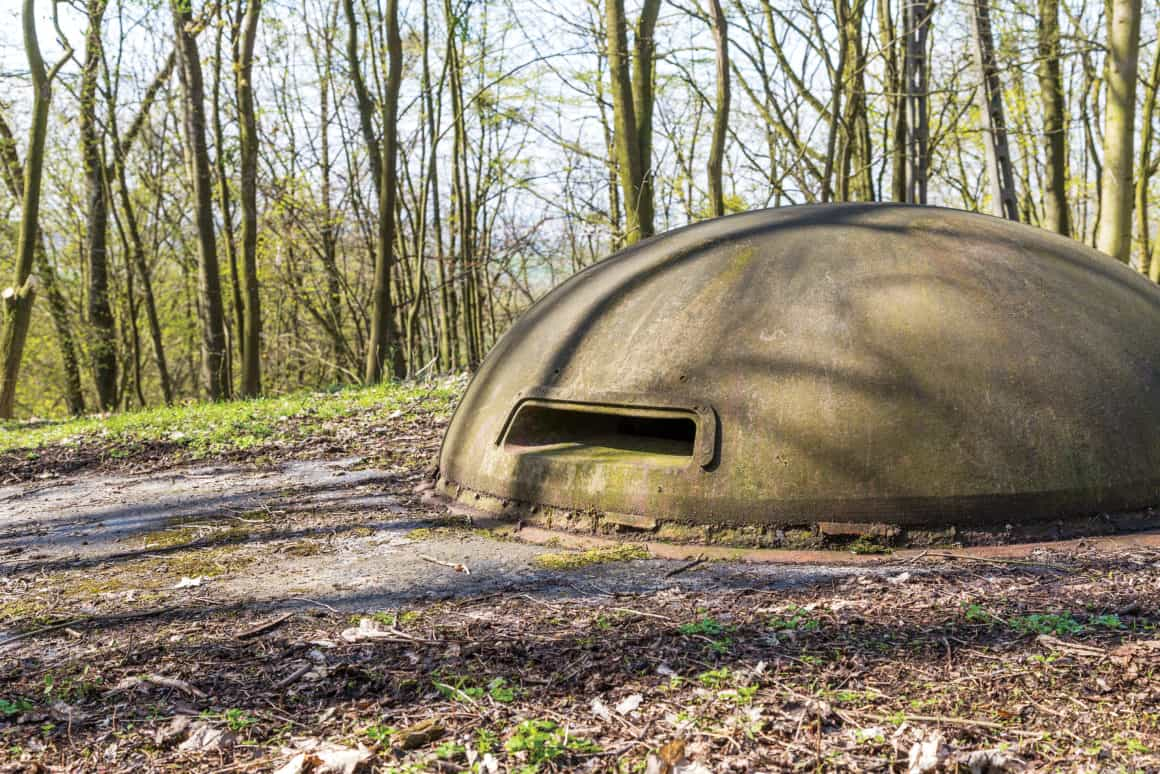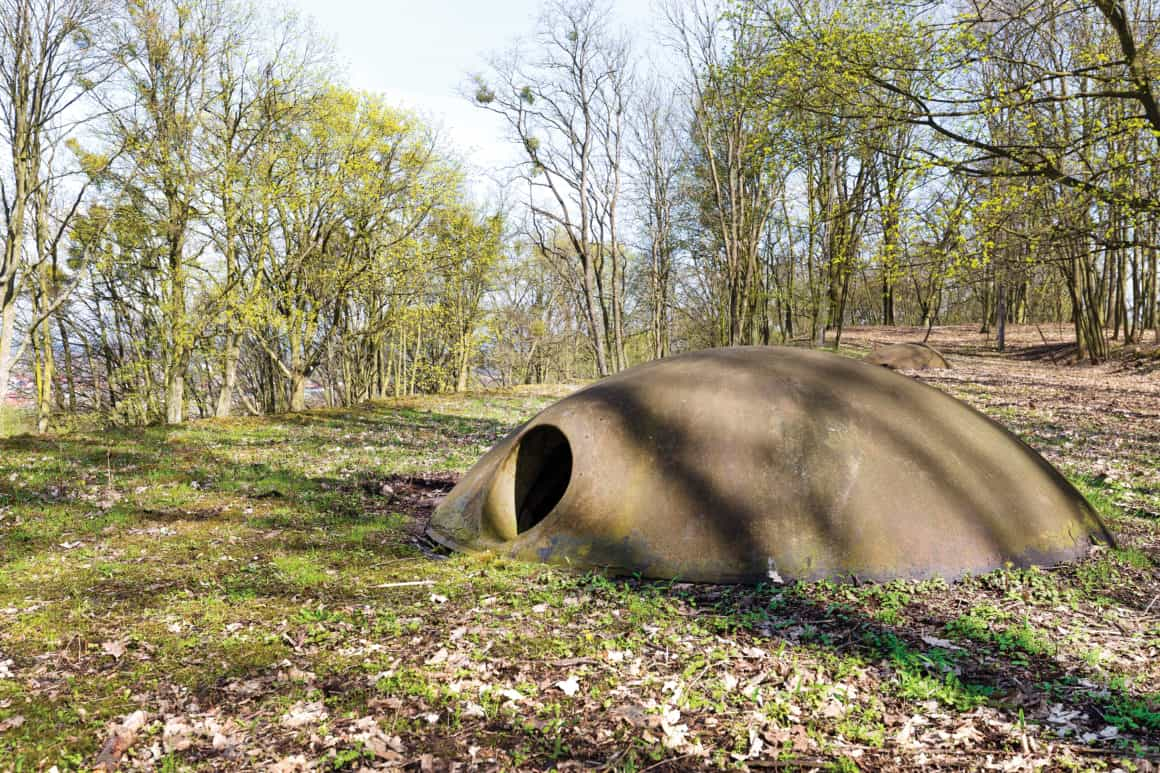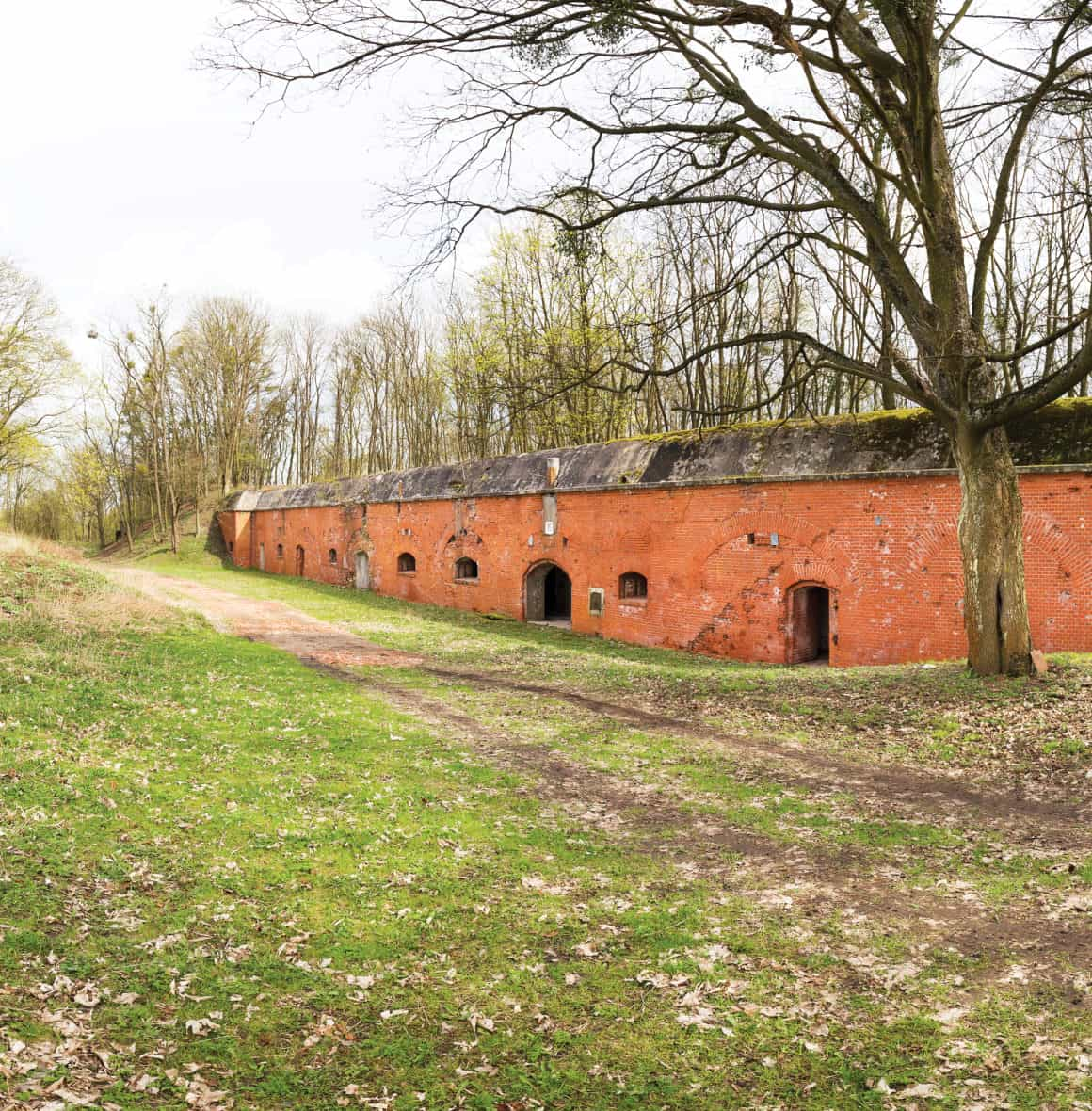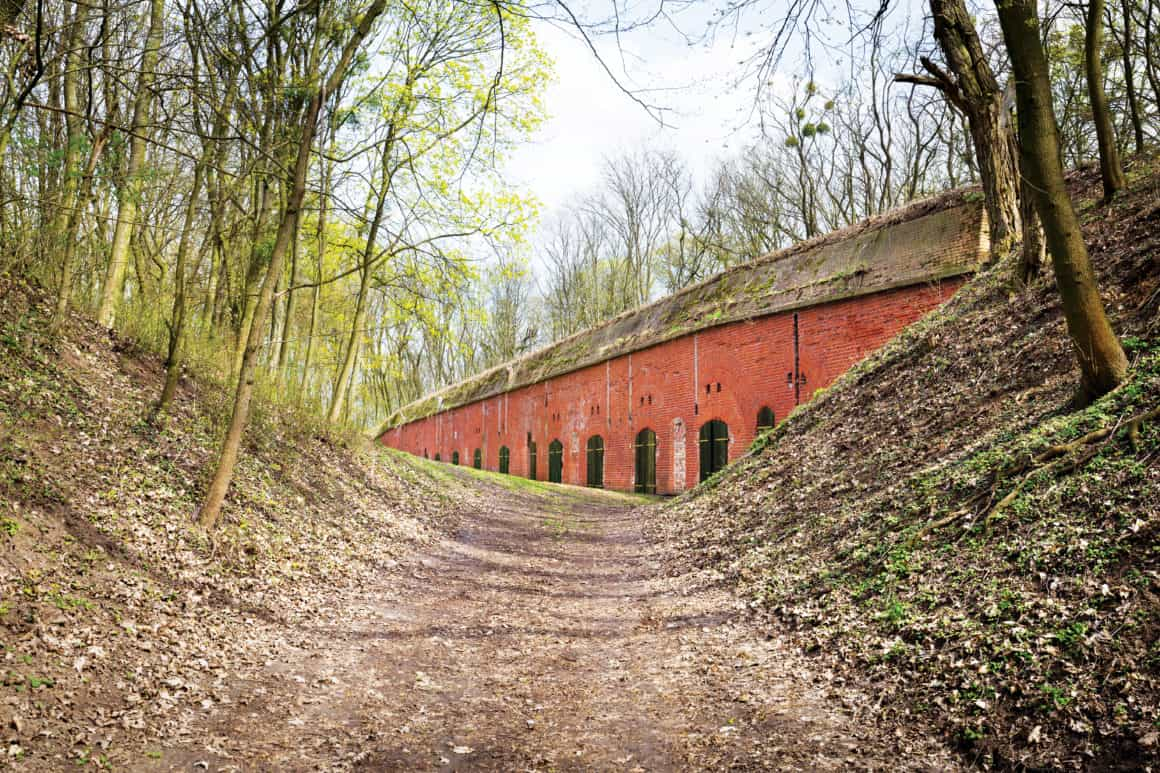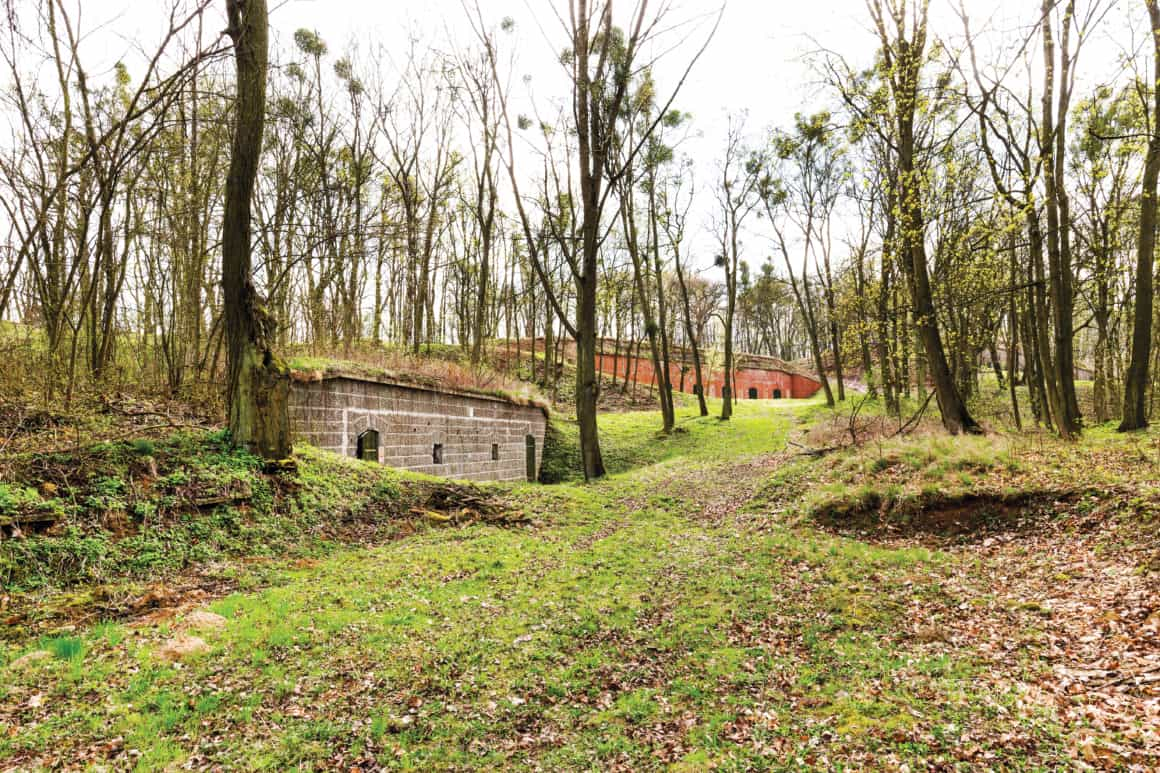The Księże Mountains, dominating Grudziądz from the east, are the most strategically important place from the point of view of the city’s defence. That is why, at the end of the 19th century, the Prussian military authorities decided to build powerful fortifications there, including the heaviest – armoured ones.
The Wielka Księża Góra Fort was built at the peak of the hill and on its western slope, on artificially formed terraces. The construction works started in 1889 and two infantry shelters and an ammunition shelter were completed just two years later. In the years 1894–1895, a complex of two connected shelters equipped with armor towers – the infantry barracks shelter and the armor battery – was built. In the years 1898–1900, another infantry barracks shelter and six two-chamber guardhouses built in the fort’s ramparts were built. Also, five double posts for portable 5.3 mm cannon towers were built in the rampart. Most likely in 1905, a two-chamber medical shelter was built and four reinforced-concrete observation posts were located in the moat. In the years that followed, the fort was electrified and a guardhouse was built at the main gate. The entire fort was surrounded by a fence made from fortress grates and a wide band of barbed wire entanglements.
In 1920, the Polish Army took over the facility emptied of diesel units, while the armoured towers were stripped of their guns. In September 1939, the fort was garrisoned by the rear echelon troops. A reserve command post and artillery observers were set up here. A field hospital was set up in the medical shelter. During World War II, the Germans operated an ammunition and explosives store at the fort. In February 1945, the fort was taken over by the Soviet troops which used heavy howitzers to fire at the city. After the war, the Polish Army organized stores here. In 2000 the fort was sold to a private person but in the coming years its condition gradually deteriorated. The current owner has been trying since 2008 to restore the original condition of the fort.
A unique object is the armor howitzer battery – one of three such batteries present in Poland. In the roof of the shelter there are four armor towers of 15 cm howitzers, mk 93. Such towers, manufactured at the Gruson Factory in Magdeburg (soon to be taken over by the Krupp company) were once very expensive and modern structures. The rate of fire of the howitzers was 2 shots per minute and at the angle of inclination of 18–32° it increased to 4 shots per minute. The range of the howitzer was 7,200 m and the ammunition used was grenades. The tower was manned by 1 nocommissioned officer and 4 gunners. Another interesting object is the rotating artillery observation tower, mk 94, which is unique because only four such towers were ever built. On the main infantry barracks shelter there is also an artillery observation tower mk. 96. It has a modernized, conical shape, which increasses the likelihood of ricoochets. The tower uses a Zeiss rangefinder, which significantly improved the accuracy of the observation. All of the aforementioned armor towers are the only objects of this type in Poland. Visitors should take a walk in the underground tunnel that connects the infantry shelter (with the observation towers) to the armor battery. The tunnel, which is 90 cm wide and 2 m tall, was used not only fot circulation of the soldiers, but also as a space for routing voice communication pipes and telephone wires.
Sightseeing: Tourist services at the fort are provided by
STOWARZYSZENIE FORT WIELKA KSIĘŻA GÓRA
Wielkie Lniska 22, 86-302 Grudziądz, tel. +48 607-399-030
fortwkg@gmail.com, www.fortwkg.eu, www.fb.com/fwkg.grudziadz


